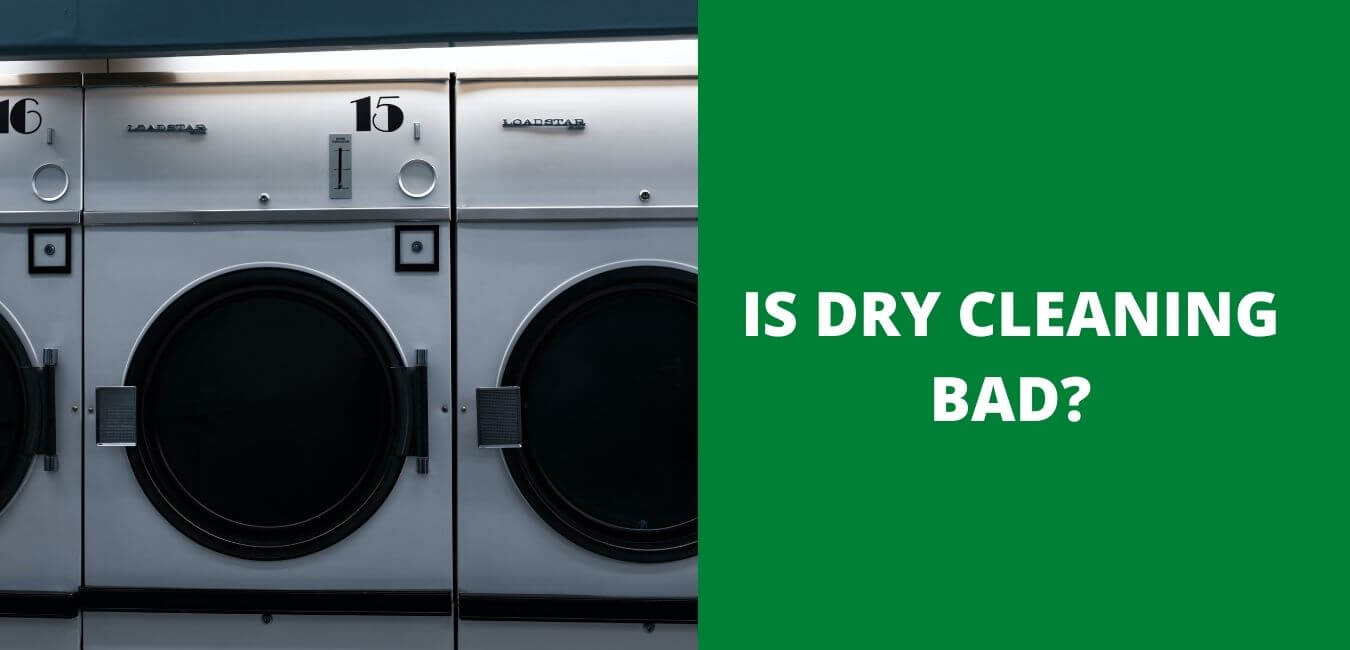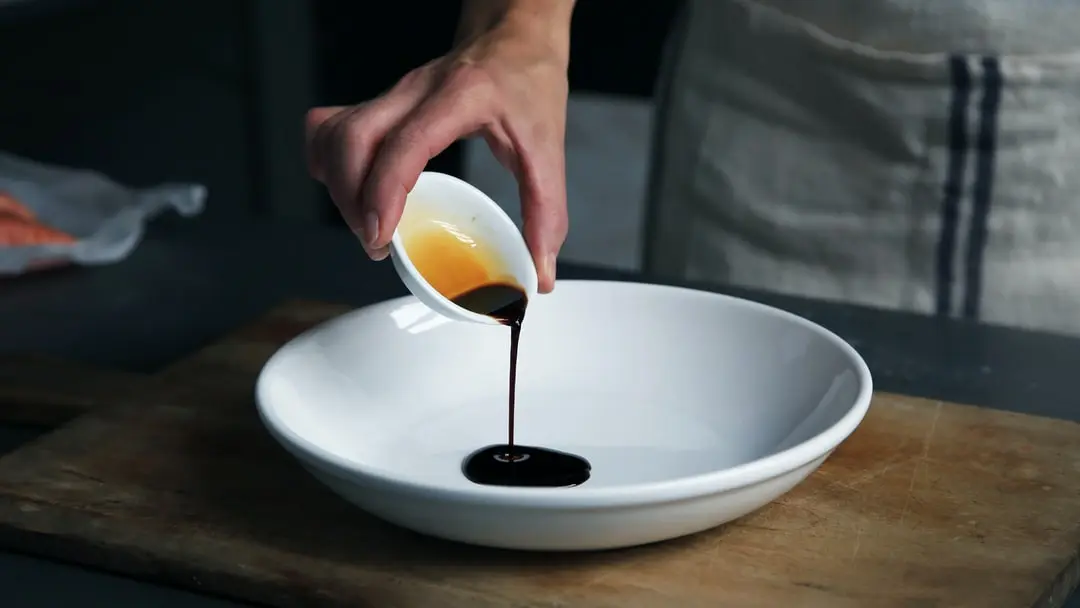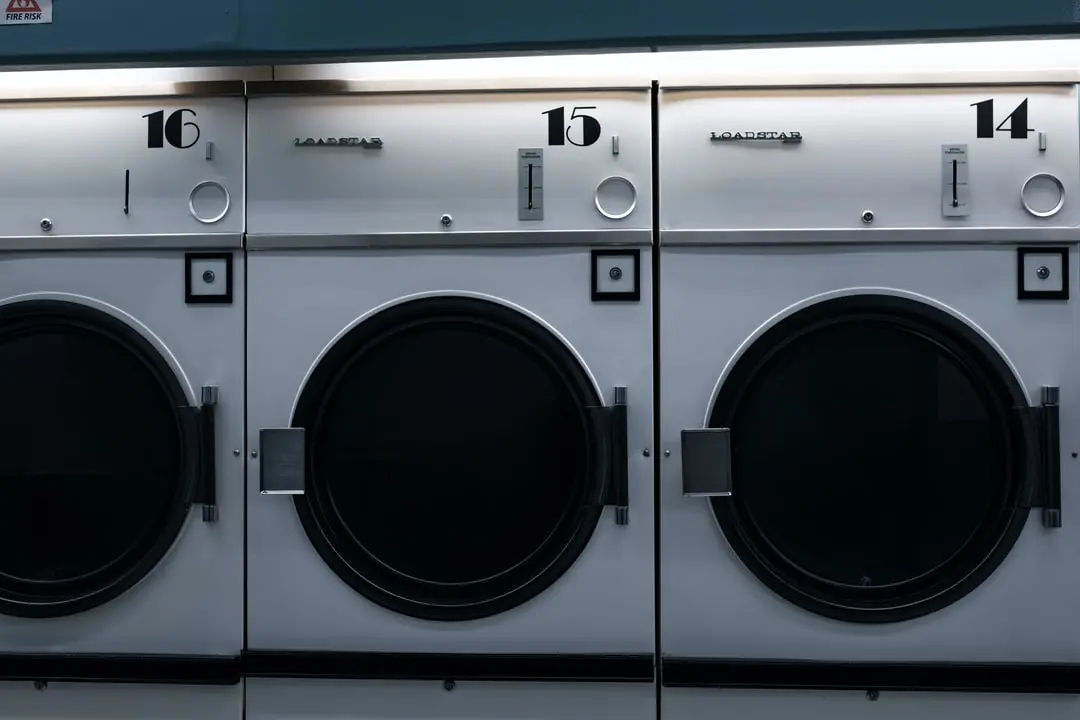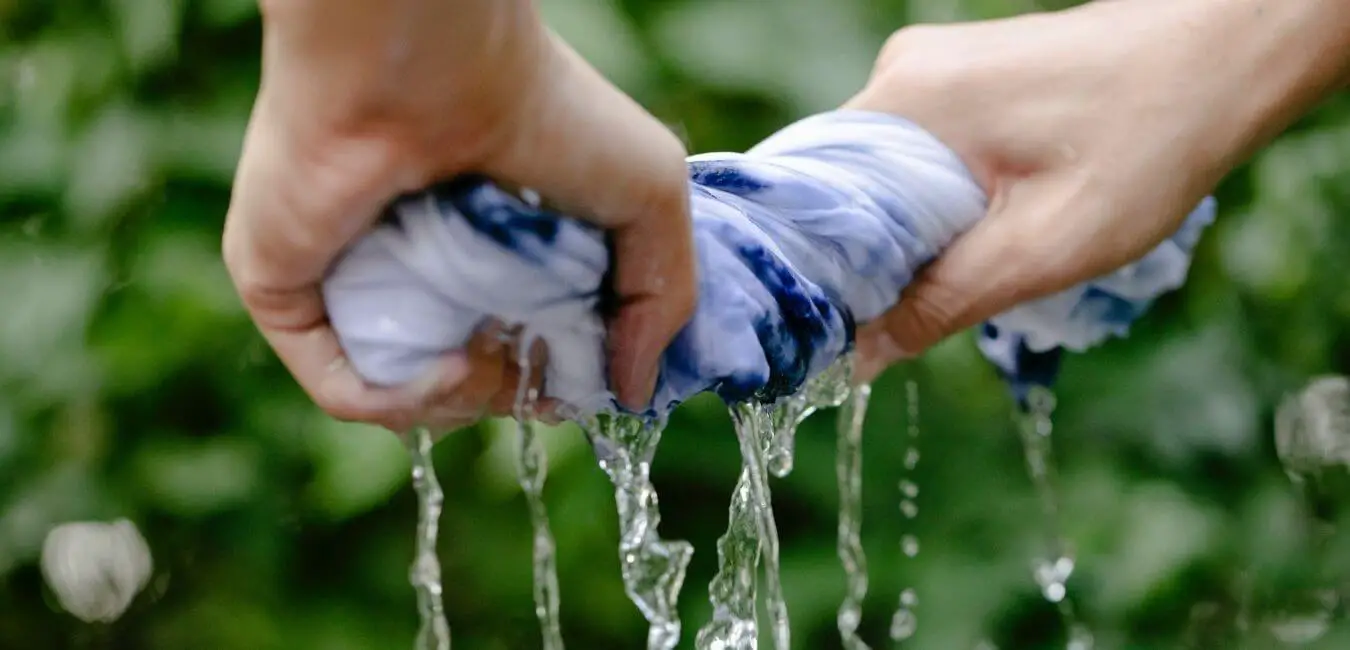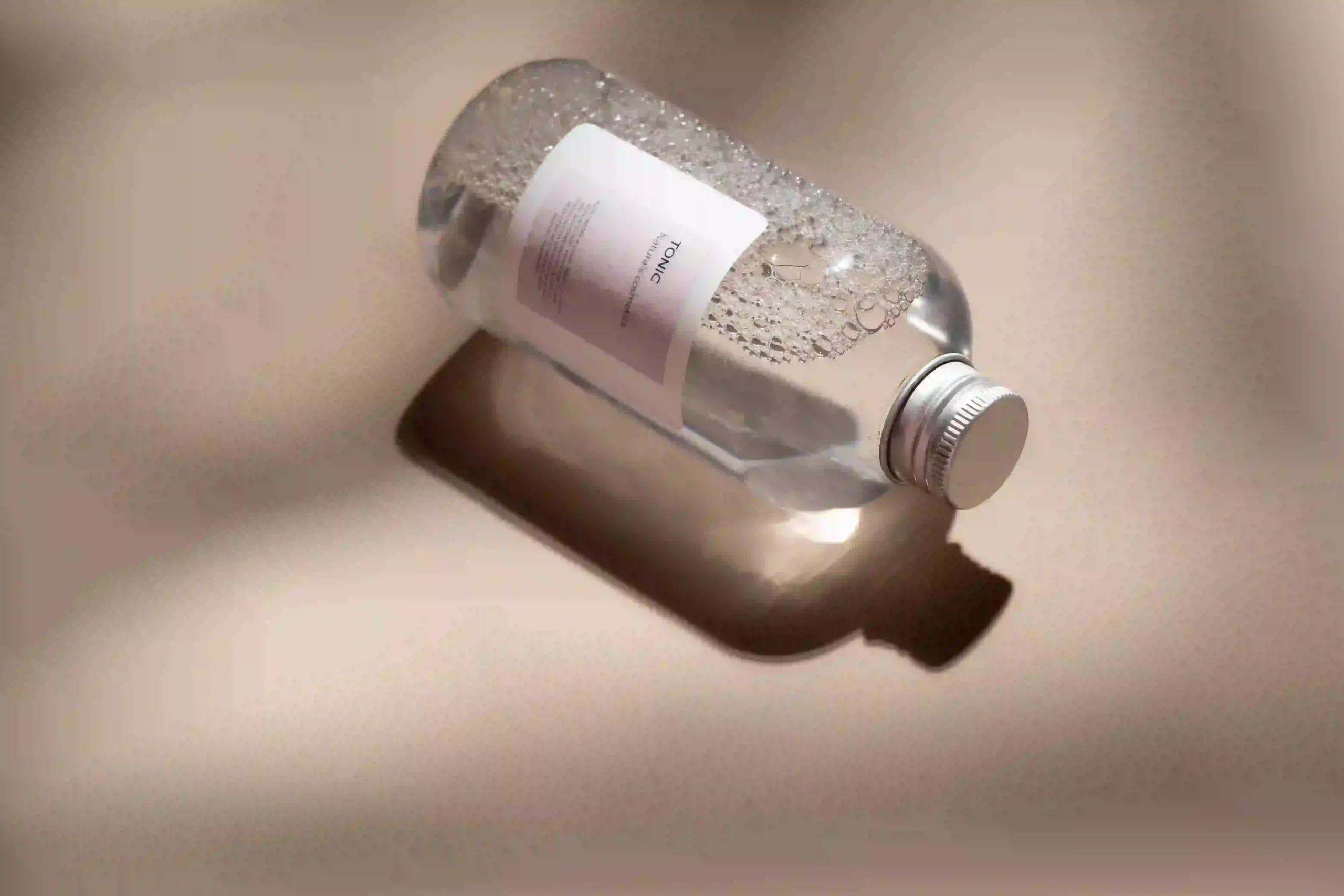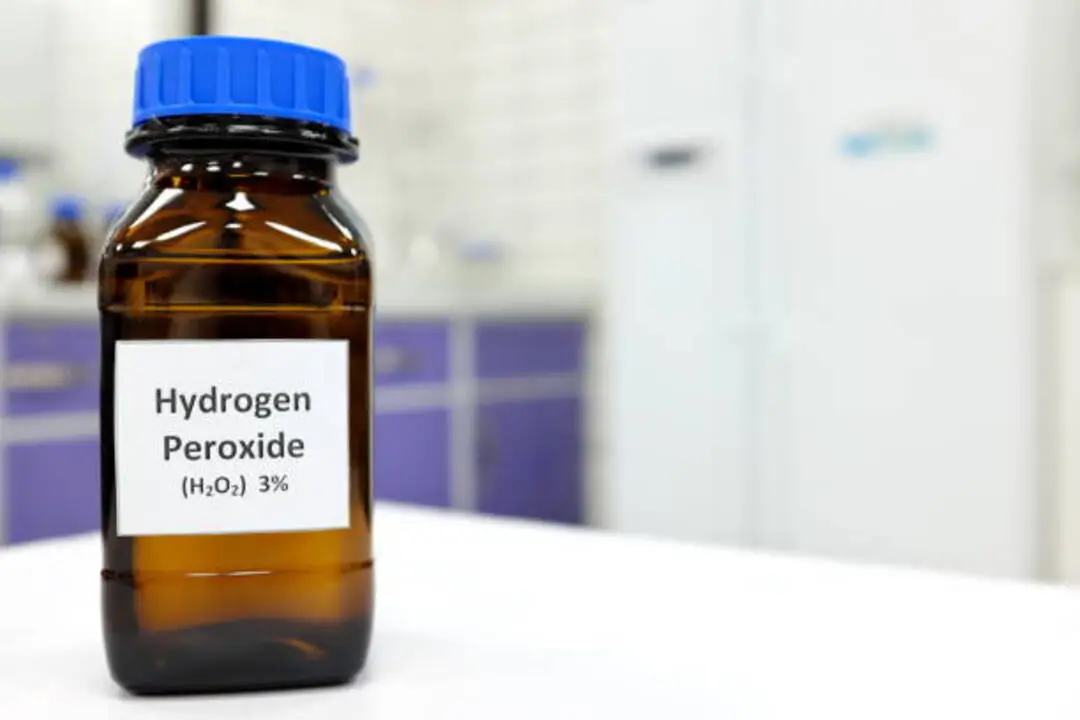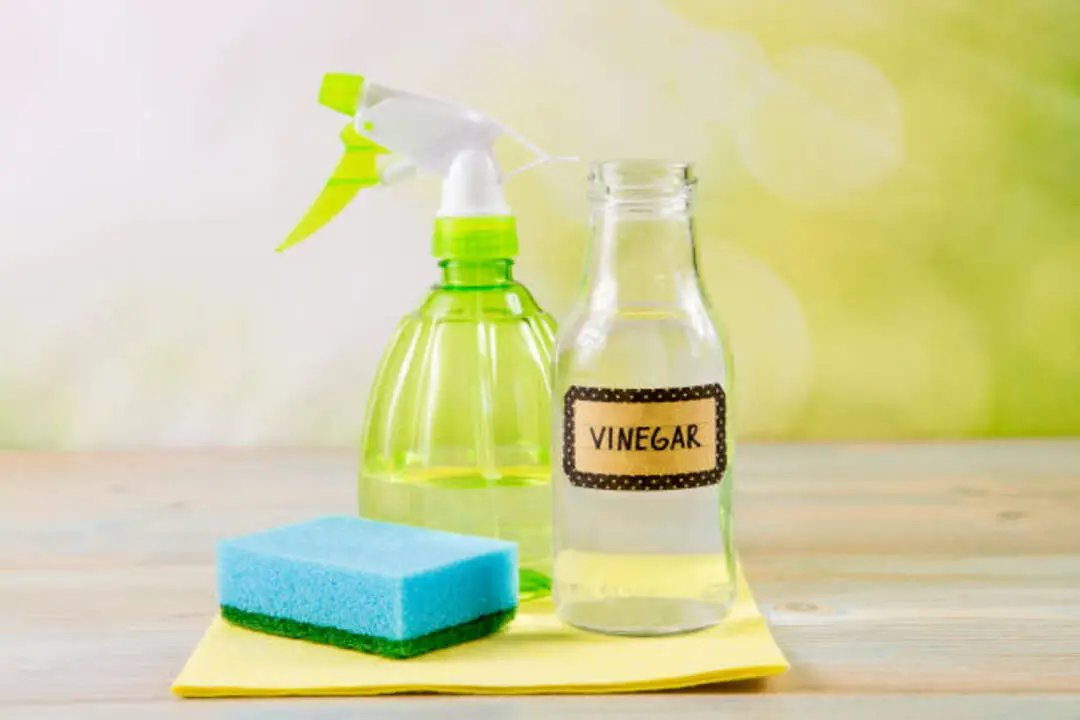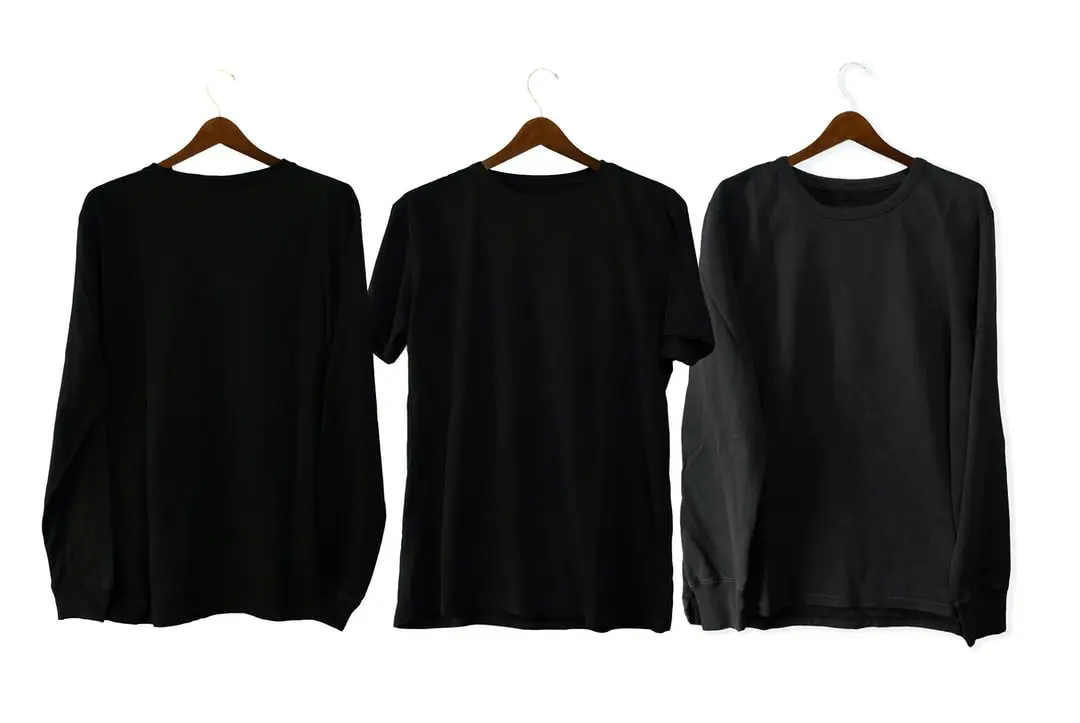We all know the feeling of excitement when we get our hands on new clothes. The thrill of trying them on, admiring ourselves in the mirror, and planning out future outfits is unmatched.
But what happens when you throw those new clothes into the washing machine for the first time, only to find that the colors have run together or faded? It’s a nightmare that no one wants to deal with.
Fear not, because we’ve got you covered with a step-by-step guide on how to wash new clothes without colors running.
We believe that freedom extends beyond just living our lives, but also to being able to wear and enjoy our clothes without worrying about ruining them in the wash. So sit back, relax, and follow these simple steps to keep your new clothes looking brand new for longer.
Sorting Your Clothes By Color

Sorting your clothes before washing is an essential step to prevent color bleeding. Color coding your clothes by separating them into white, light, and dark piles is a useful technique. It helps you avoid mixing colors that could cause a disaster in the wash. Once you’ve divided your clothes into these categories, it will be easier for you to manage each pile separately.
Before you start washing, it’s also essential to perform a color fastness test on new or brightly colored garments. This test will determine whether the dye in the fabric is likely to run or fade after washing.
To do this, dampen a small section of the garment with water and rub it with a white cloth. If there’s any visible color transfer on the cloth, it’s best to wash that garment separately or with similar colors.
Checking the fabric care label is another crucial step when sorting your clothes by color. The label provides information on how best to handle and wash each item of clothing. They usually have symbols indicating whether an item can be machine washed or requires dry cleaning.
If you’re unsure about how to care for your clothes, always follow the instructions provided on the care label to avoid any mishaps during washing.
Checking The Fabric Care Label

It’s important to know the fabric material of the clothes before washing them, so you can decide what type of detergent and temperature settings to use.
I’d suggest cotton or polyester items need to be washed in cold water, with a mild detergent. Whereas, delicate fabrics like silk and wool should be washed using a special detergent and warm water.
Additionally, always look for the colorfastness symbol on the fabric care label to make sure the colors won’t run.
Lastly, if the label doesn’t give instructions, it’s best to hand-wash the item in cold water and mild detergent.
Fabric Material
When it comes to washing new clothes without colors running, it’s important to first check the fabric care label.
One crucial aspect of this is understanding the fabric material.
Sustainable materials such as organic cotton, bamboo, and linen require gentle care and mild detergents to prevent damage and color bleeding.
On the other hand, fabric blends like polyester and spandex may require a more thorough washing process.
It’s worth noting that different fabrics also have unique properties that affect how they should be washed.
For example, silk and wool are delicate materials that need to be hand-washed or dry-cleaned to avoid shrinkage or damage.
Understanding the fabric material helps you choose the appropriate washing method and detergent to ensure your clothes remain in good condition for longer.
In addition, opting for sustainable materials not only benefits the environment but also ensures your clothes last longer.
They are made with durable fibers that stand up well against wear and tear, making them a better investment in the long run.
So next time you’re shopping for new clothes, take a moment to consider the fabric material and opt for sustainable options whenever possible.
Types Of Detergents
Now that we’ve covered the importance of checking the fabric care label, let’s dive into another crucial aspect of washing clothes – choosing the right detergent.
With so many options available in the market, it can be overwhelming to decide which one to use. However, it’s essential to understand that not all detergents are created equal.
Natural alternatives have gained popularity in recent years due to their eco-friendliness and gentle nature on fabrics. These alternatives include ingredients like baking soda, vinegar, and castile soap. They are perfect for sustainable materials like organic cotton, bamboo, and linen as they do not contain harsh chemicals that can damage or fade colors.
On the other hand, high-efficiency options are ideal for synthetic blends like polyester and spandex as they are designed to work with modern washing machines’ low water usage.
It’s worth noting that different detergents also have unique properties that affect how they should be used. For example, some detergents may require a pre-wash treatment or specific temperature settings to achieve optimal results.
Understanding these nuances helps you choose the appropriate detergent for your clothes and ensures they remain in good condition for longer. So next time you’re shopping for detergent, consider natural alternatives or high-efficiency options depending on your fabric material and washing machine type.
Temperature Settings
Now that we know how important it is to check the fabric care label and choose the right detergent, let’s talk about temperature settings. Temperature plays a crucial role in ensuring your clothes are cleaned properly without being damaged. Choosing appropriate fabrics is one thing, but using the wrong temperature setting can undo all your efforts.
The impact of water hardness on temperature settings cannot be overlooked either. Hard water contains minerals that can affect the effectiveness of detergents and cause buildup on clothes. It’s essential to know if you have hard or soft water and adjust your temperature settings accordingly.
When it comes to choosing the right temperature setting, there are three options: cold, warm, and hot.
Cold water is best for delicate fabrics like silk or wool as it prevents shrinkage and fading.
Warm water is ideal for synthetic blends like polyester or nylon as it helps remove oil-based stains.
Hot water should be reserved for heavily soiled items like towels or bed sheets as it can kill bacteria and germs.
In conclusion, understanding the importance of temperature settings when washing clothes is crucial for maintaining their quality and longevity. By choosing appropriate fabrics, considering the impact of water hardness, and selecting the right temperature setting, you can ensure your clothes remain in good condition for longer periods while also saving energy and money in the process.
Pre-treating Stains

Now that you’ve checked the fabric care label, it’s time to move on to pre-treating any stains that may be present on your new clothes.
Pre-treating techniques are essential for ensuring that your clothes come out looking fresh and clean without any unsightly marks or discolorations. There are various types of fabric stains, including oil-based stains, protein-based stains, and dye-based stains. Each type requires a different approach when it comes to pre-treating them.
For example, protein-based stains like blood or sweat should be soaked in cold water before washing, while dye-based stains like ink or wine require the use of specialized stain removers. When pre-treating your new clothes, it’s important to take the time to identify what type of stain you’re dealing with so that you can apply the appropriate treatment.
By doing so, you’ll significantly increase your chances of successfully removing the stain and preventing any damage to the fabric. Moving forward, choosing the right detergent is crucial in ensuring that your new clothes remain vibrant and free from color runs.
In the next section, we’ll discuss some key factors to keep in mind when selecting a detergent that will effectively clean your clothes without causing any harm to the fabric.
Choosing The Right Detergent

Ah, the joys of laundry day. Nothing quite like sorting through a pile of clothes, trying to decipher which ones are okay to wash together and which ones might bleed colors all over each other. But fear not, dear reader, for I have a solution.
Choosing the right detergent can make all the difference in keeping your new clothes looking fresh and vibrant.
When it comes to washing your clothes without colors running, eco-friendly detergents are a great option. Not only do they help protect our planet, but they are also gentle on your clothes and won’t cause any unwanted color bleeding. Look for detergents that are made with plant-based ingredients and free from harsh chemicals.
For those with sensitive skin, hypoallergenic detergents are the way to go. These detergents are designed to be gentle on the skin and reduce the risk of allergic reactions. They may not be as widely available as traditional detergents, but they are worth seeking out if you have allergies or sensitivities.
Now that you know about choosing the right detergent, let’s move on to another important aspect of washing your new clothes without colors running: using cold water.
Using Cold Water
One of the easiest ways to prevent colors from running in new clothes is to use cold water for washing. Not only does it help preserve the garment’s color and shape, but it also saves energy and money. The benefits of cold water are numerous, and it’s definitely worth giving a try.
Cold water vs hot water – which one should you use? Well, hot water is great for removing stains and killing bacteria, but it can also cause colors to bleed. In contrast, cold water is gentle on fabrics, preventing shrinkage and fading. Plus, it’s an eco-friendly option that reduces your carbon footprint.
So if you want to keep your new clothes looking vibrant and fresh, opt for cold water instead. By using cold water when washing your new clothes, you’re not only protecting their quality but also helping the environment. And the best part is that it doesn’t require any extra effort or expense on your part.
So next time you do laundry, switch to cold water mode and see the difference for yourself. Just remember to avoid overloading the washing machine to ensure optimal cleaning results!
Avoiding Overloading The Washing Machine

You know what’s worse than the colors of your new clothes running? Overloading your washing machine. It’s like trying to fit an elephant in a matchbox. Not only will it not work, but it can also cause some serious damage to your machine.
So, if you want to avoid that hassle, here are some tips for maximizing efficiency and preventing machine damage.
First and foremost, make sure you’re not overloading your washing machine. If you have a big family and lots of laundry to do, it might be tempting to just throw everything in there at once. But trust me, it’s not worth it. Not only will your clothes not get as clean as they should, but you’ll also risk damaging your machine in the process.
Another space-saving tip is to organize your laundry room properly. If you have everything you need within reach, you won’t waste time running back and forth trying to find things. Plus, having a well-organized laundry room will help reduce stress and make doing laundry feel less daunting overall. So take the time to tidy up and create a system that works for you.
With these tips in mind for maximizing efficiency and preventing machine damage while organizing your laundry room for space-saving purposes, let’s move on to the next section: adding vinegar to the wash. This simple trick can help keep colors from fading while simultaneously softening clothes without harsh chemicals. So if you’re ready to learn more about this amazing technique, keep reading!
Adding Vinegar To The Wash

Now that we know how to avoid overloading the washing machine, let’s talk about adding vinegar to the wash.
Vinegar has various benefits for laundry, including preventing color fading and softening fabrics. But did you know it can also help remove stubborn stains?
To use vinegar in your laundry routine, simply add a cup of white vinegar to the rinse cycle. This will help remove any excess detergent residue and leave your clothes feeling fresher. Additionally, vinegar can act as a natural fabric softener without leaving behind any harsh chemicals.
If you have stubborn stains on your clothes, try using vinegar as a pre-treatment. Mix equal parts of water and vinegar, apply the solution directly to the stain, and let it sit for 10-15 minutes before washing as usual. This trick works wonders on tough stains like coffee or wine.
Using a gentle cycle is also important when washing new clothes to prevent color bleeding and damage to delicate fabrics.
So remember, adding vinegar to your laundry routine not only has great benefits but can also help with those pesky stains!
Using A Gentle Cycle
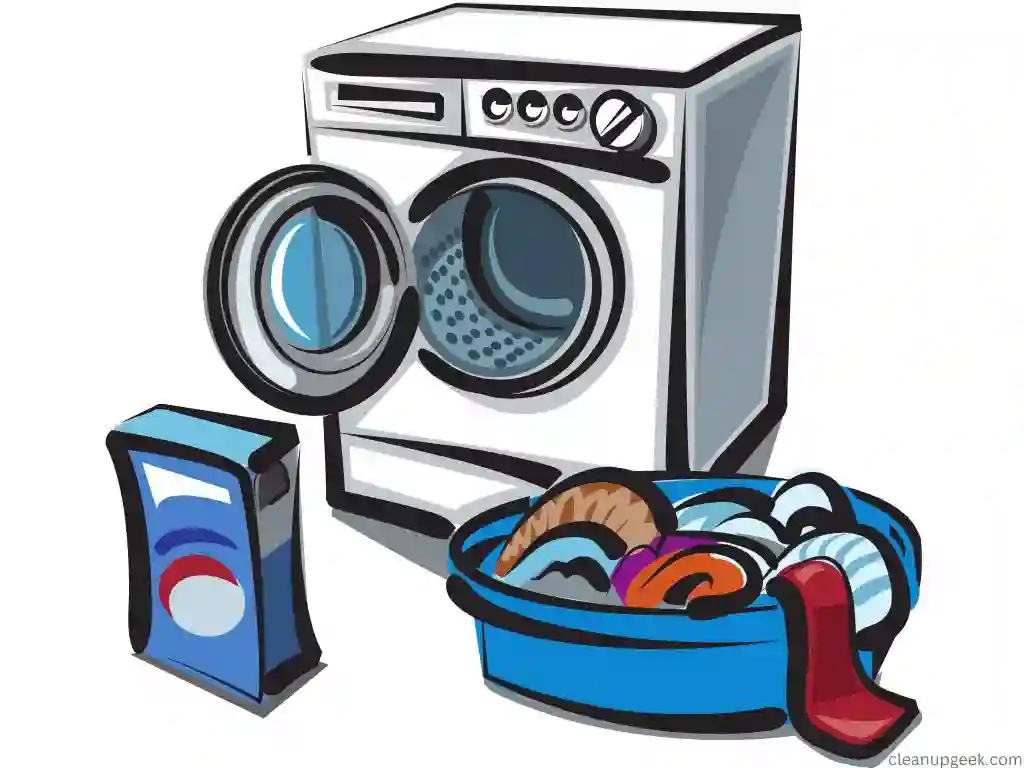
We should discuss the settings for the gentle cycle first, like the temperature and spin speed.
Then, we’ll talk about how to load the machine, like separating the colors and adding laundry detergent.
After that, we’ll go over any special instructions for washing new clothes.
Finally, we’ll cover the importance of using a gentle cycle for new clothes.
Gentle Cycle Settings
If you’re worried about the colors on your new clothes running, a gentle cycle setting is the way to go. This option is available on both top-loading and front-loading machines, and it’s an excellent alternative to hand washing. While some people might argue that hand washing is best for delicate fabrics, there are significant benefits to using a machine with a gentle cycle setting.
One of the main benefits of using a gentle cycle setting is that it saves time and effort. Hand washing can be time-consuming, especially if you have a lot of clothes to wash. Using a machine with a gentle cycle setting allows you to clean your clothes without having to spend hours scrubbing them by hand. Plus, you don’t have to worry about damaging the fabric or causing colors to run.
When it comes to choosing between a top-loading or front-loading machine, either one will work fine as long as they have a gentle cycle setting. However, some people prefer front-loading machines because they tend to be more energy-efficient and use less water than top-loading machines. Additionally, since front-loading machines don’t have an agitator in the middle of the drum, they’re gentler on clothes overall.
Ultimately, whether you choose a top-loading or front-loading machine with a gentle cycle setting depends on your personal preference and budget.
Loading The Machine
Now that we know the benefits of using a gentle cycle setting, let’s talk about loading the machine.
Do you ever struggle with fitting all your heavy clothes into one load? Here are some tips for maximizing space in the washing machine.
First, make sure to evenly distribute the weight of your clothes. If one side is too heavy, the machine may become unbalanced and stop mid-cycle.
Second, try rolling or folding your clothes instead of wadding them up. This will help create more space and allow water and detergent to circulate better.
When it comes to loading heavy clothes, it’s important to be mindful of not overloading the machine. Overloading can cause excessive wear and tear on both your clothes and the machine itself.
By maximizing space in a smart way, you can ensure that your clothes get clean without putting unnecessary strain on your washer. So take a little extra time when loading up those heavy items and enjoy having fresh, clean laundry without any damage.
Using a gentle cycle setting is an excellent way to care for delicate fabrics while still saving time and effort.
By following these tips for loading heavy clothes and maximizing space in the washing machine, you can ensure that everything gets cleaned properly without causing any damage or wear and tear.
So next time you’re doing laundry, remember to use a gentle cycle setting and load up your washer in a smart way!
Avoiding The Dryer
After washing your new clothes, it’s important to give them the best care possible. One way to do this is by avoiding the dryer. This may seem like an inconvenience, but it actually has many benefits for both your clothes and the environment.
Firstly, air drying benefits your clothes by preventing shrinkage and preserving their shape. The high heat of a dryer can cause certain fabrics to shrink or lose their original form. Not only does air drying help maintain the integrity of your clothes, but it also saves energy and money on electricity bills.
Secondly, using fabric softener alternatives can make a big difference in the quality of your clothes after air drying. Many fabric softeners contain harmful chemicals that can irritate the skin and damage clothing fibers over time. Instead, try using natural alternatives such as vinegar or wool dryer balls to soften your clothes without any negative side effects.
To help you get started with air drying, here are five tips for maximizing its benefits:
- Choose a well-ventilated area with plenty of space for hanging clothes
- Use hangers or clothespins to avoid creases
- Shake out each item before hanging to prevent wrinkles
- Separate colors and fabrics to ensure even drying
- Avoid direct sunlight to prevent fading
With these tips in mind, you’ll be able to enjoy all the benefits that air drying has to offer. In fact, you may even find that it becomes a preferred method for washing your clothes in the future.
As we’ve discussed, avoiding the dryer can be beneficial for both your clothing and the environment. But what about taking things one step further?
In our next section, we’ll explore how you can harness the power of the sun itself to dry your clothes naturally – no electricity required.
Drying Clothes In The Sun

The benefits of drying clothes in the sun are undeniable – it’s free, fast, and environmentally friendly.
But there are precautions to take when doing it, such as checking the care labels and avoiding strong sunlight.
And, of course, it’s important to know how to wash new clothes without colors running.
So let’s look at a step-by-step guide!
Benefits Of Drying Clothes In The Sun
Picture yourself feeling the warm sun on your skin as you hang your freshly washed clothes outside. Drying clothes in the sun have a unique appeal that comes with many benefits that can make laundry day enjoyable.
The advantages of drying clothes in the sun include saving money on electricity bills, reducing your carbon footprint, and extending the life of your garments.
The heat from the sun is a natural form of energy that is free and abundant, making it an eco-friendly way to dry clothes. Additionally, sunlight can help to naturally disinfect clothes, killing bacteria and germs that might be present after washing.
Despite all its advantages, drying clothes in the sun also has some disadvantages.
Clothes may fade over time, especially if they are brightly colored or contain synthetic fabrics like polyester or nylon. Furthermore, hanging clothes outside may not always be possible due to inclement weather conditions or living in apartments without outdoor spaces.
In conclusion, while there are both advantages and disadvantages associated with drying clothes in the sun, it remains a popular choice for many households worldwide.
The next time you do laundry, consider hanging your clothes outside and bask in the freedom that comes with being energy-efficient and environmentally conscious!
Precautions For Drying Clothes In The Sun
Now that we’ve discussed the benefits of air drying clothes, let’s talk about some precautions to take when drying clothes in the sun. While it might be tempting to hang all your laundry outside on a sunny day, there are a few things to keep in mind.
Firstly, be mindful of the time of day you hang your clothes out. Direct sunlight can cause fabrics to fade and weaken over time. To avoid this, try hanging your clothes out early in the morning or later in the afternoon when the sun is less intense.
Secondly, pay attention to what you’re hanging out. Dark-colored clothing and delicate fabrics like silk or lace should be kept out of direct sunlight as they can easily fade or become damaged. Alternatives to sun drying include using indoor drying racks or even tumble dryers on low heat settings.
Lastly, make sure to shake out any clothing items before hanging them up outside. This will prevent any dust or dirt from settling into the fabric while it dries.
By taking these simple precautions, you can enjoy all the benefits of air drying while keeping your clothes looking their best for longer. So go ahead and embrace this eco-friendly way of doing laundry – just remember to play it safe!
Ironing Clothes Inside Out

Ironing clothes can be a tedious task, but with the right hacks, it can be a breeze.
One of the best ironing hacks is to turn your clothes inside out before ironing them. This will protect the outside of your clothes from any potential scorch marks or heat damage from the iron.
Another tip for efficient ironing is to choose fabrics that are easier to work with. Cotton and linen are some of the best fabrics for ironing since they don’t easily wrinkle and don’t require much effort to smooth out. On the other hand, silk and chiffon may require more attention and care when being ironed.
By following these simple tips, you’ll be able to master the art of ironing in no time.
In the next section, we’ll discuss how to store your freshly washed and ironed clothes properly so that they remain in great condition for longer periods of time.
Storing Clothes Properly
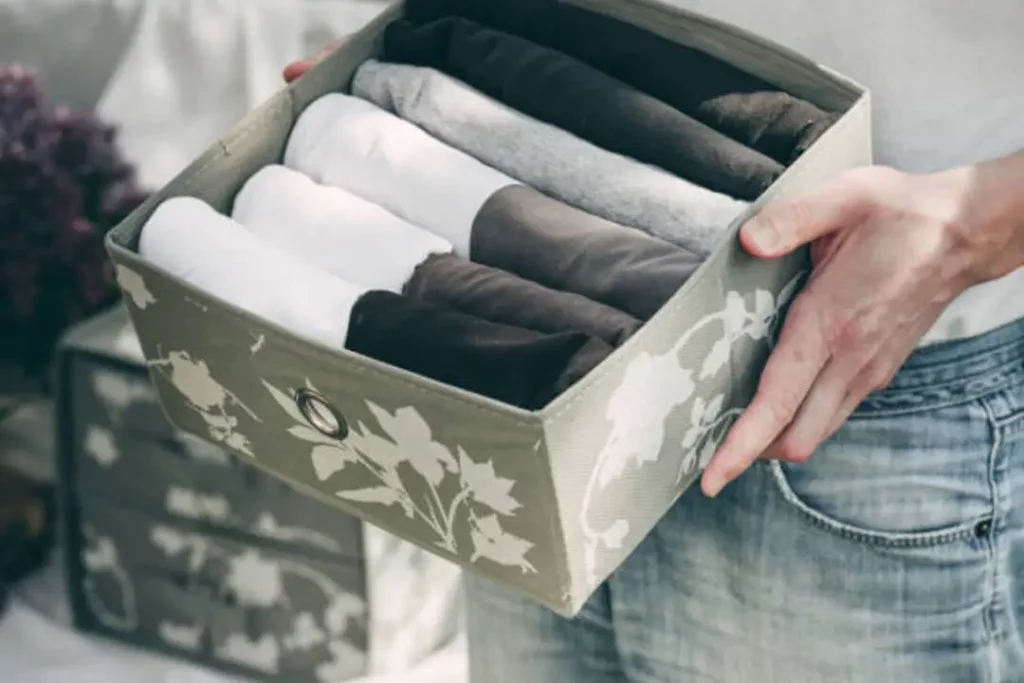
Ironing clothes inside out may seem like a hassle, but it’s worth it to maintain the quality of your clothing. Now that your clothes are wrinkle-free and ready to be put away, let’s talk about maximizing closet space and preventing moth damage.
Firstly, it’s important to organize your closet in a way that allows you to see all of your clothing options. This will not only save you time when getting dressed but also prevent items from being forgotten and never worn. Utilize hanging organizers and shelves to create more space for folded items.
Secondly, while storing clothes properly can help prevent moth damage, it’s important to take additional steps as well. Moths are attracted to natural fibers such as wool and silk, so avoid storing these types of fabrics in the same space as other clothing items. Cedar blocks or lavender sachets placed throughout the closet can also help deter moths.
Finally, avoiding harsh chemicals when cleaning and storing clothing is essential for both the longevity of your garments and your own health. Opt for natural cleaning products and fabric refreshers instead of heavily scented sprays or dryer sheets.
By taking these simple steps, you can ensure that your wardrobe stays in top shape for years to come.
Avoiding Harsh Chemicals
When it comes to washing new clothes, it’s understandable to want to avoid harsh chemicals. Not only can these chemicals be harmful to the environment, but they can also irritate sensitive skin. Luckily, there are plenty of eco-friendly alternatives available that can get your clothes clean without putting your health at risk.
One of the easiest ways to avoid harsh chemicals when washing your clothes is to use natural fabric softeners. These products are made from plant-based ingredients and are free from synthetic fragrances and dyes. They can help keep your clothes soft and fluffy while also reducing static cling.
Another option is to look for laundry detergents that are specifically designed for sensitive skin. These products are usually free from irritating additives like perfumes and dyes, making them a great choice for anyone with allergies or other sensitivities. By using these eco-friendly alternatives, you can enjoy fresh, clean clothes without worrying about harsh chemicals or other irritants.
Transition: While using eco-friendly alternatives may help you avoid harsh chemicals when washing your clothes, sometimes issues still arise. If you run into any problems during the washing process, don’t worry – there are plenty of troubleshooting tips that can help you get back on track.
Conclusion and final thoughts 💭
In conclusion, washing new clothes without colors running doesn’t have to be a daunting task. By following these simple steps, you can ensure that your clothes stay looking fresh and vibrant for many washes to come.
Remember to sort your clothes by color before washing them and check the fabric care label for specific instructions. It’s also important to pre-treat stains and choose the right detergent to avoid any potential damage.
Always use cold water and iron your clothes inside out to prevent any fading or bleeding of colors. As the adage goes, ‘An ounce of prevention is worth a pound of cure,’ so taking care of your clothes from the start will save you time and money in the long run.


